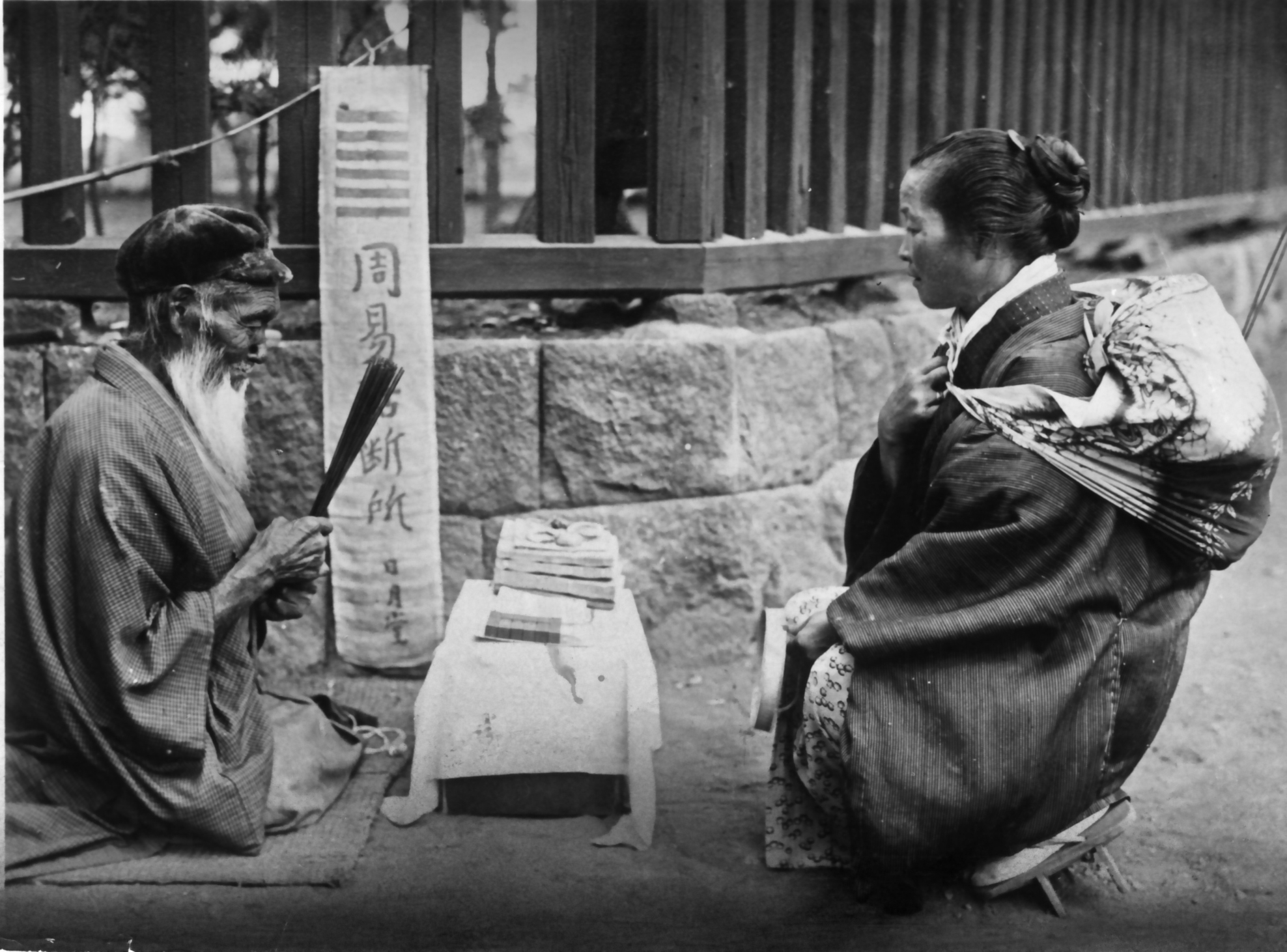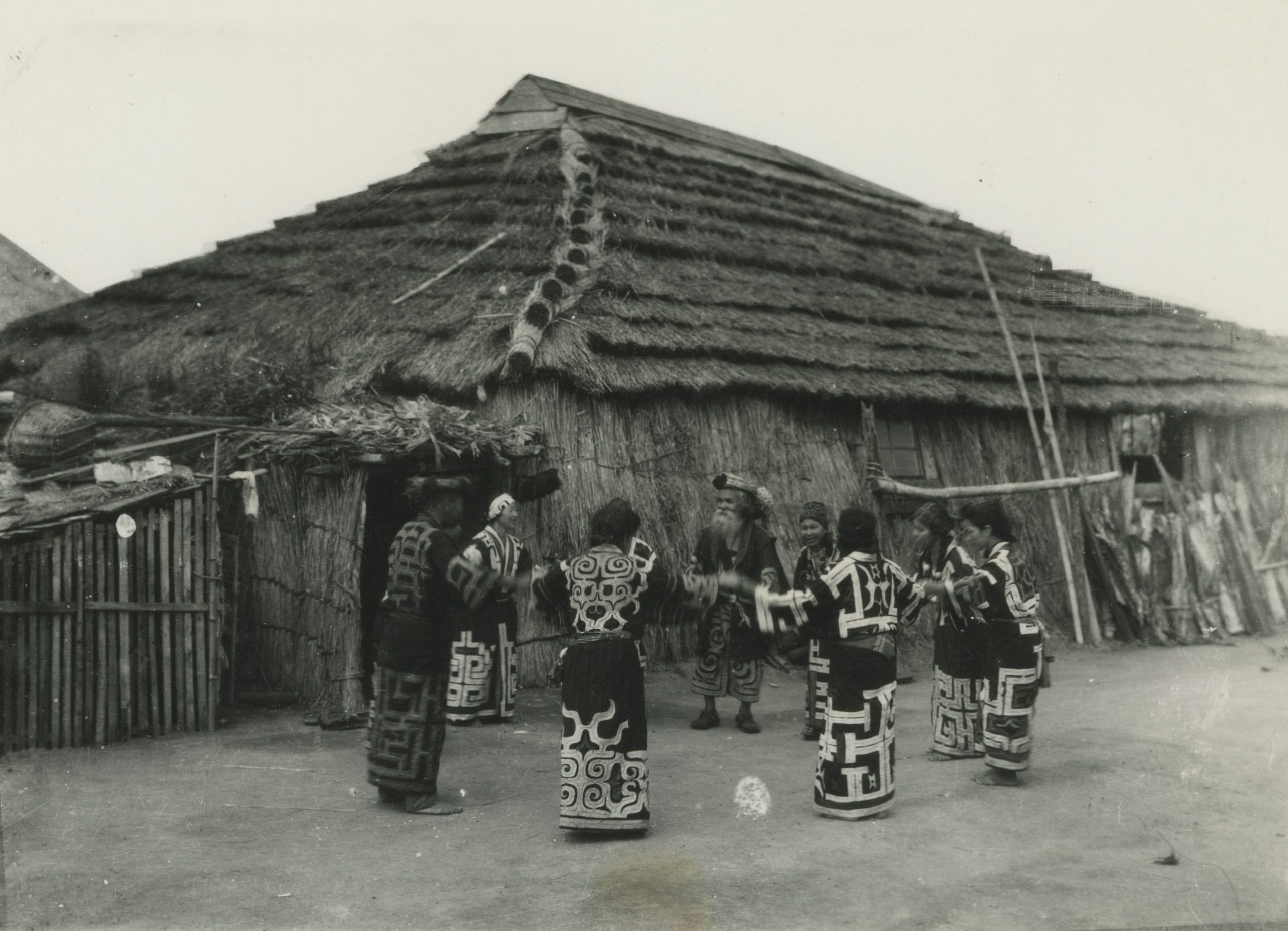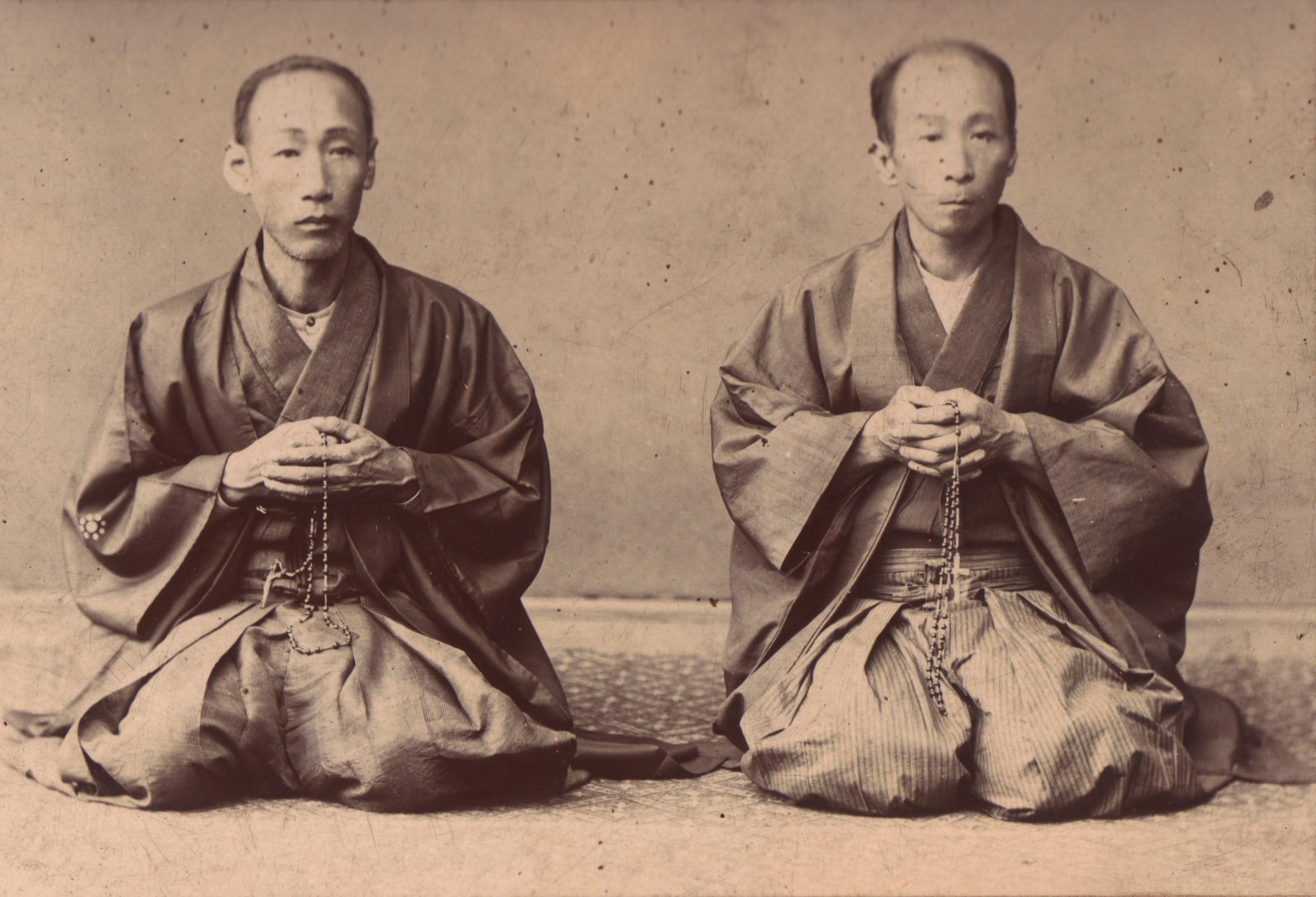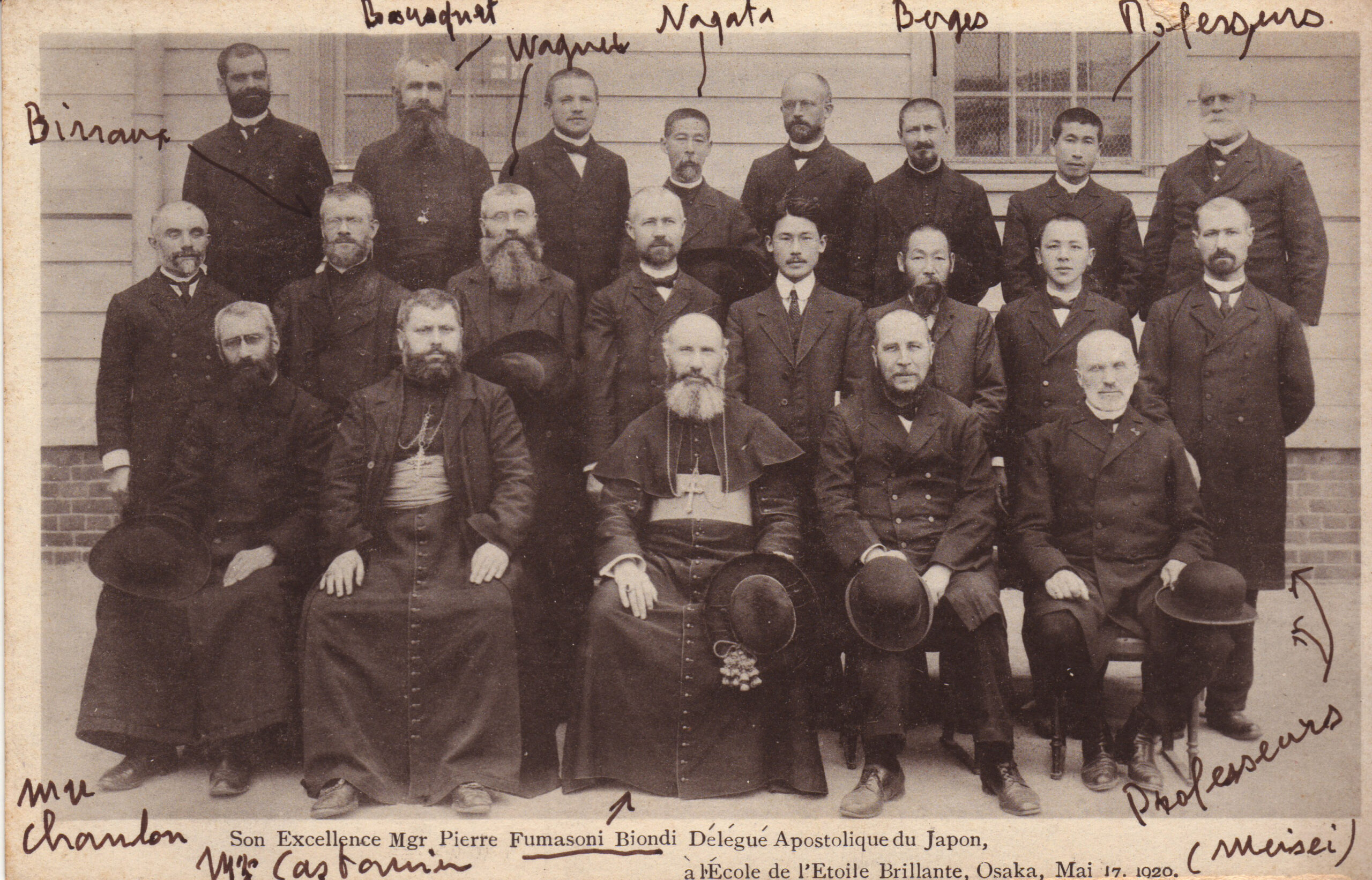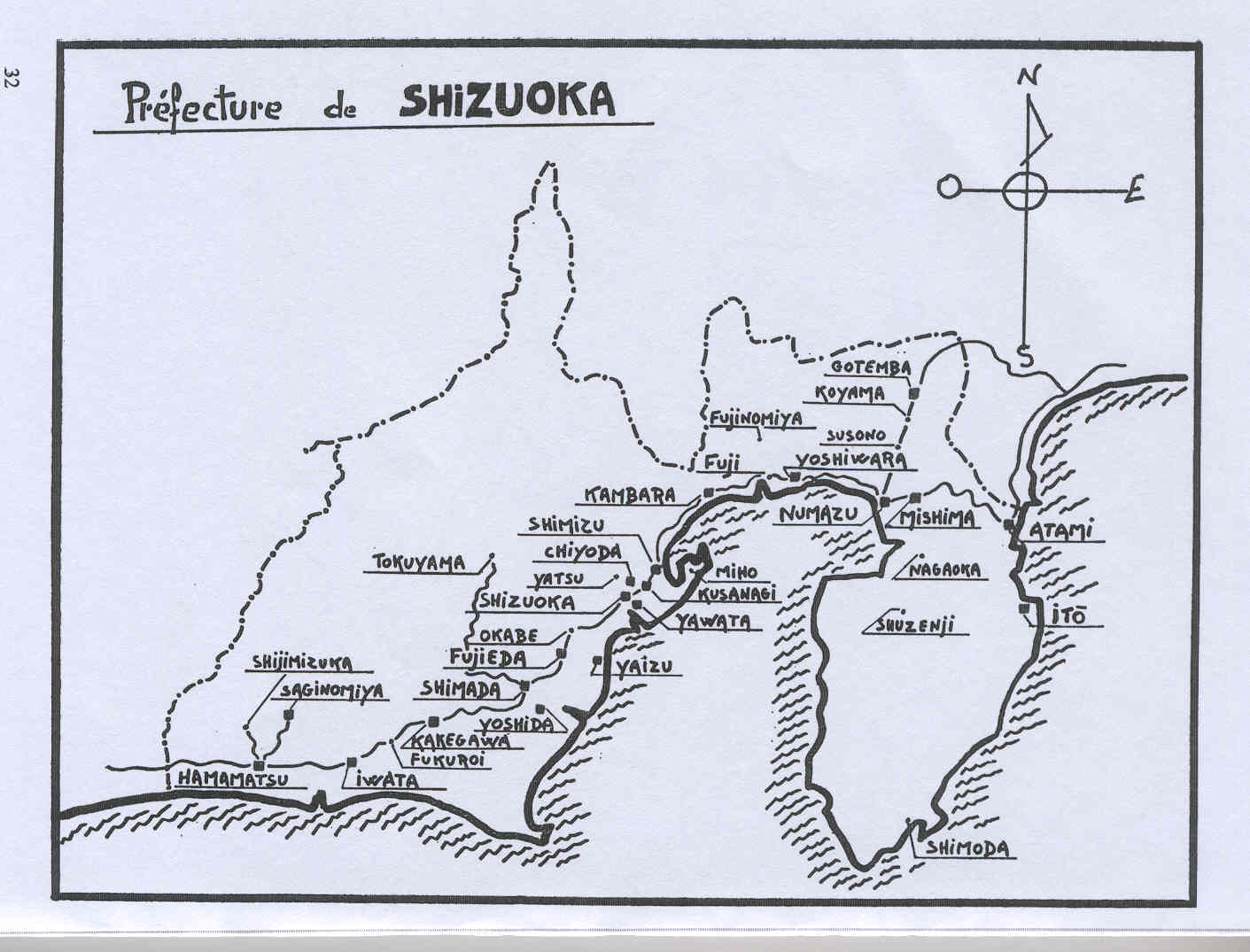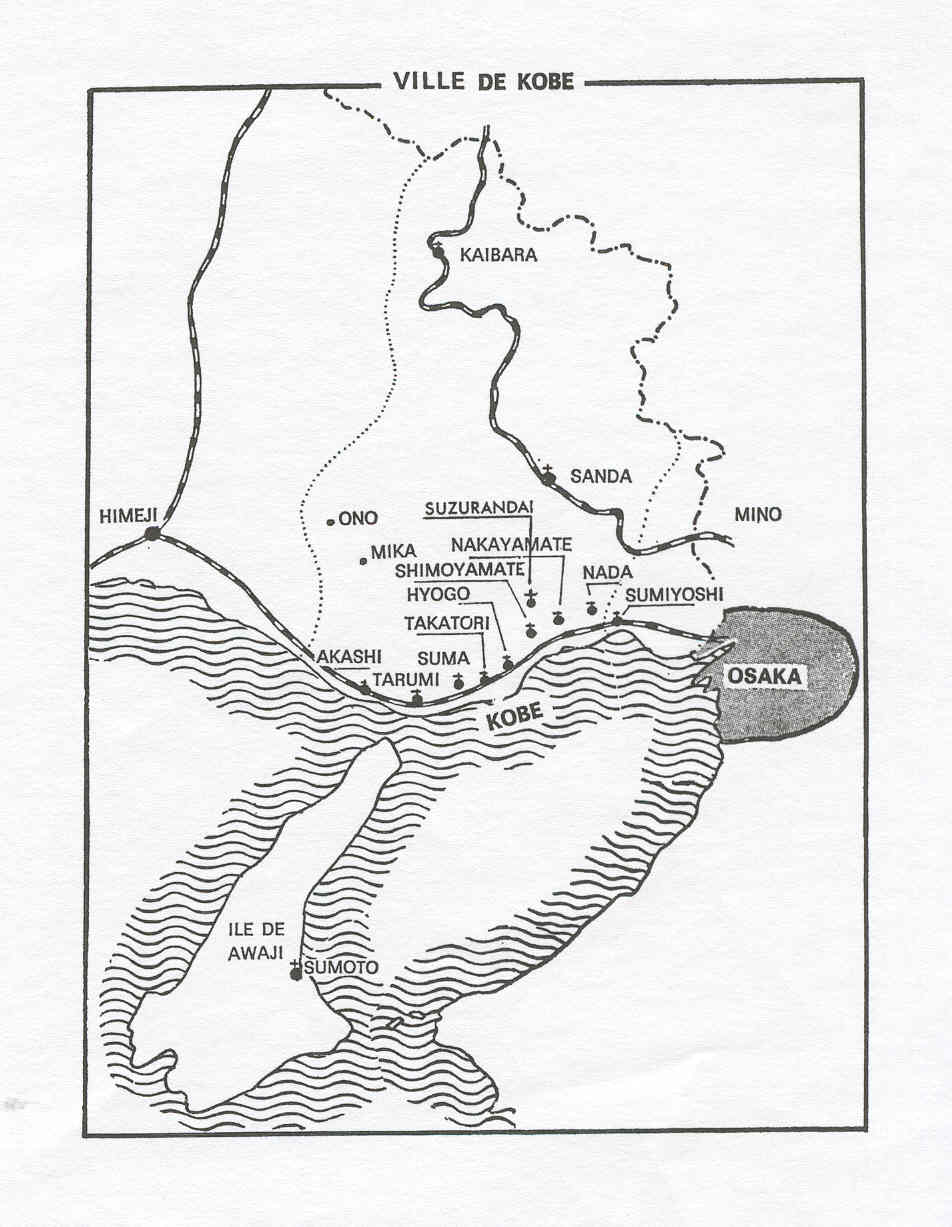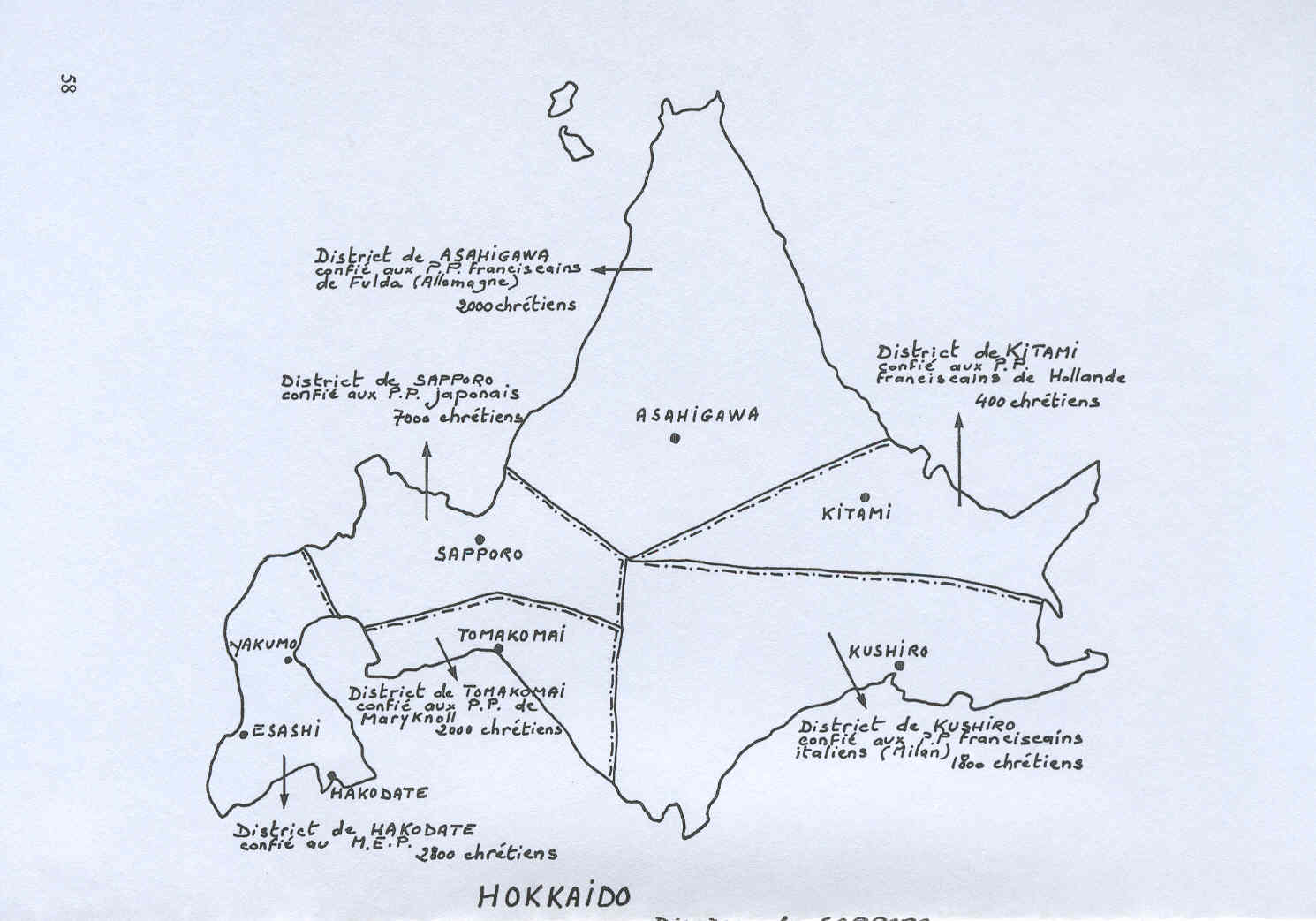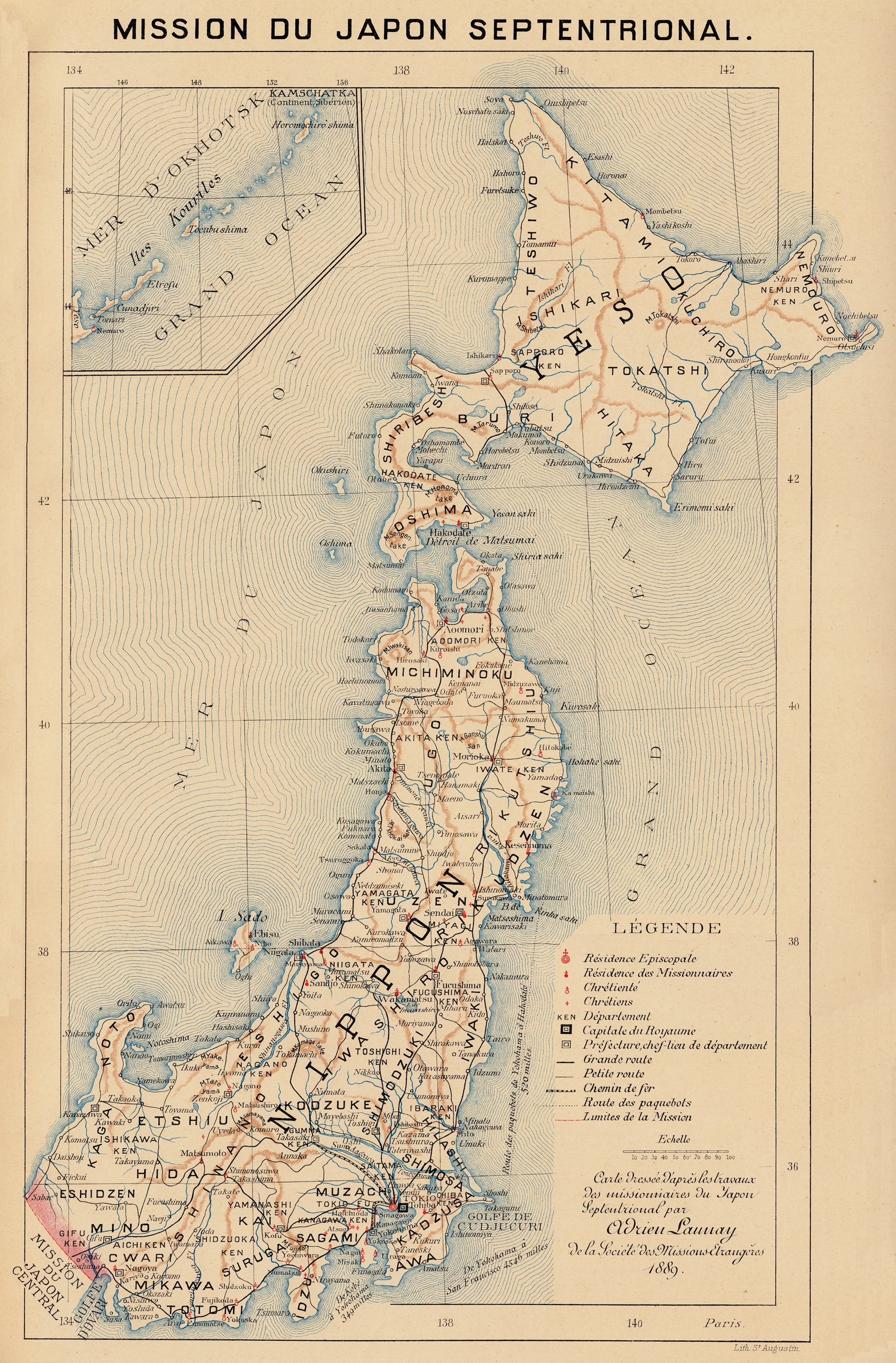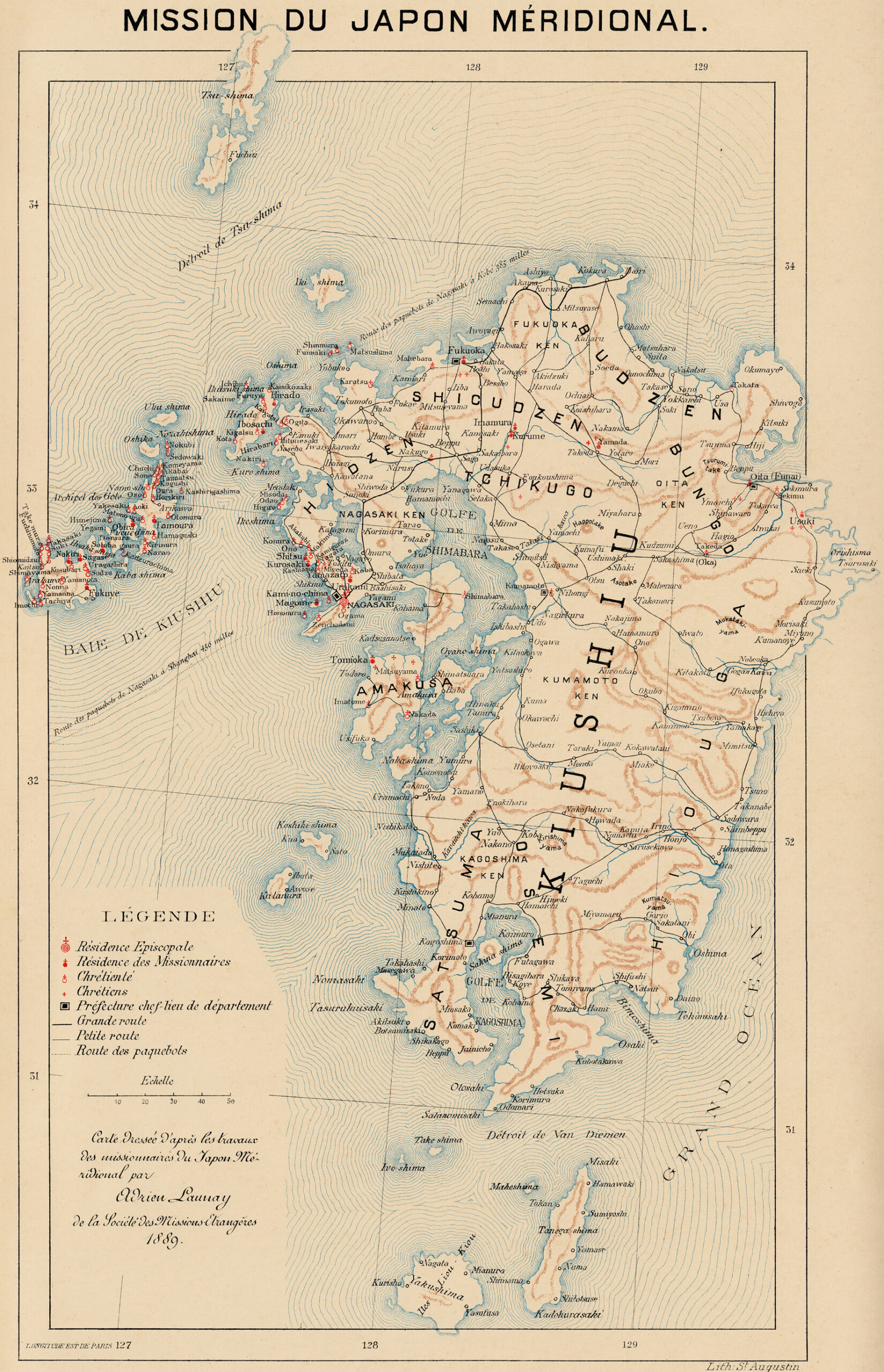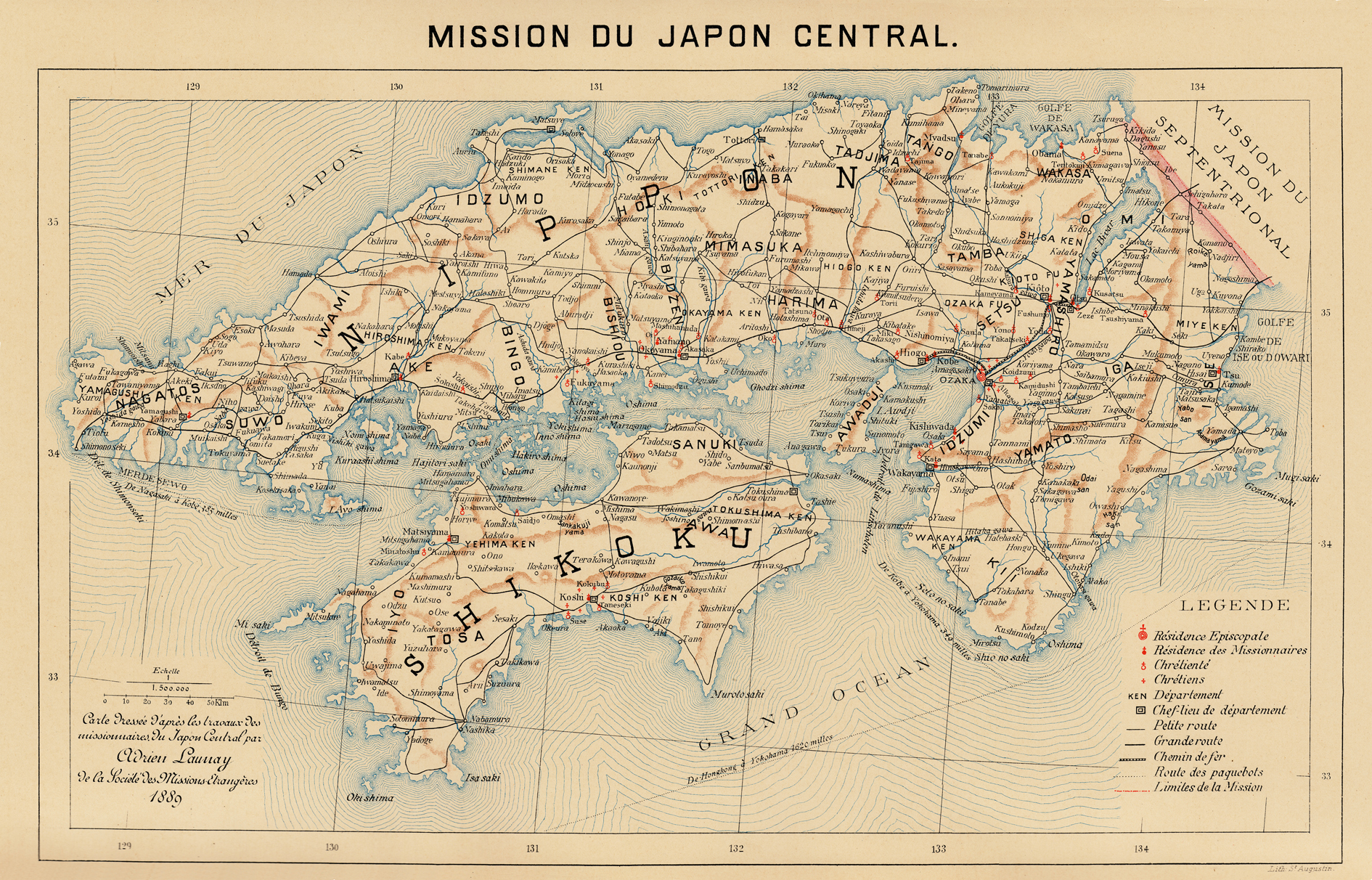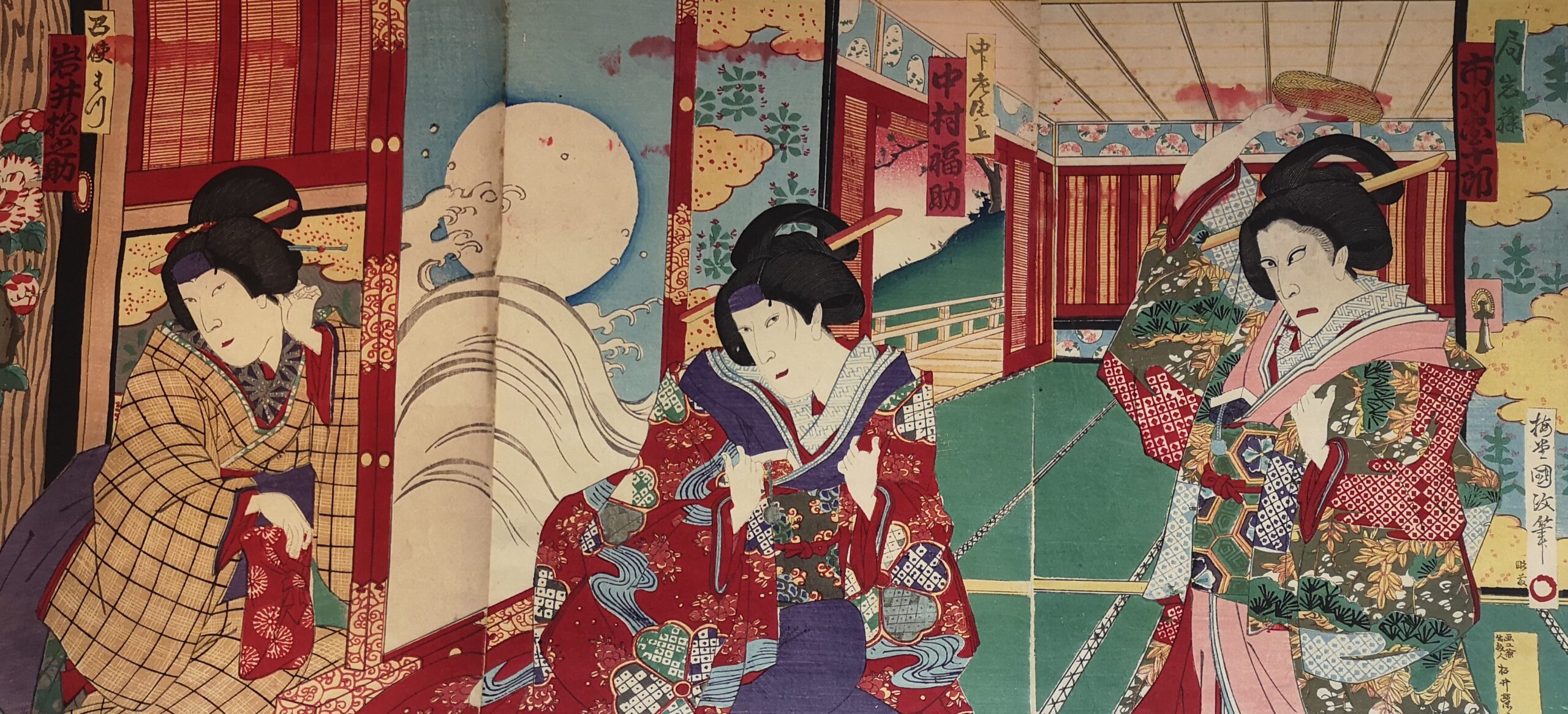
The MEP in Japan: an overview (1831-1980)
In the sixteenth century, the Society of Jesus takes advantage of the political fragmentation of bakufu Japan (or shogunate) to further evangelisation, following on from the actions of famous Jesuit Saint-François-Xavier, who arrived in 1549. Between 1590 and 1610 the Church experiences a period of strong growth, but the 1614 edict causes its withdrawal with violent persecutions, forcing the catholic community to hide. Between 1650 and 1842, Iemitsu Tokugawa’s Japan closes itself in the context of the isolationist policy of sakoku, which aims at reinforcing the control of foreign trade by the shogunate. However, “Christian crypto-villages” survive, inhabited by descendants of converts.
From 1831, the MEP try to enter the land of the rising sun through the Ryūkyū islands. The creation of the Japanese mission in 1842 marks the beginnings of MEP activities in Japan. The missionaries are in charge of recovering contact with the Christian descendants in Japan more than two centuries after the persecutions. According to P. Petitjean’s account, on the 17th of March 1865, contact is established with Christians from the Urakami village, near Nagasaki. Quickly, these Christians face persecutions and deportations by the central authorities. Despite the end of the bakufu resulting in the imperial restauration proclaimed on the 3rd of January 1868, religious liberty is only really acquired in 1889, ratified by the new Constitution.
In order for the missionaries to cover this vast territory, Japan is first divided into two apostolic vicariates in 1876, and then three in 1888. In 1891, the Propaganda fide establishes dioceses covering the whole of Japan.
Between 1899 and 1945, with Japan entering a troubled twentieth century, the evolution of Japanese Catholicism happens along with the rise of absolutism, nationalism and the country being dragged into a series of devastating armed conflict. Whilst Catholicism is less and less tolerated by the Japanese authorities, it also becomes an instrument used by the state to support the country in the war effort. Simultaneously, in 1940, a Japanese law establishes that no foreign subject can have any authority over Japan. The MEP gradually lose their responsibility in the Japanese dioceses and live through a difficult period until the surrender of Japan in 1945. After the war, many missionaries and nuns are sent there. Gradually, the MEP hand over their responsibilities to a Japanese Church.
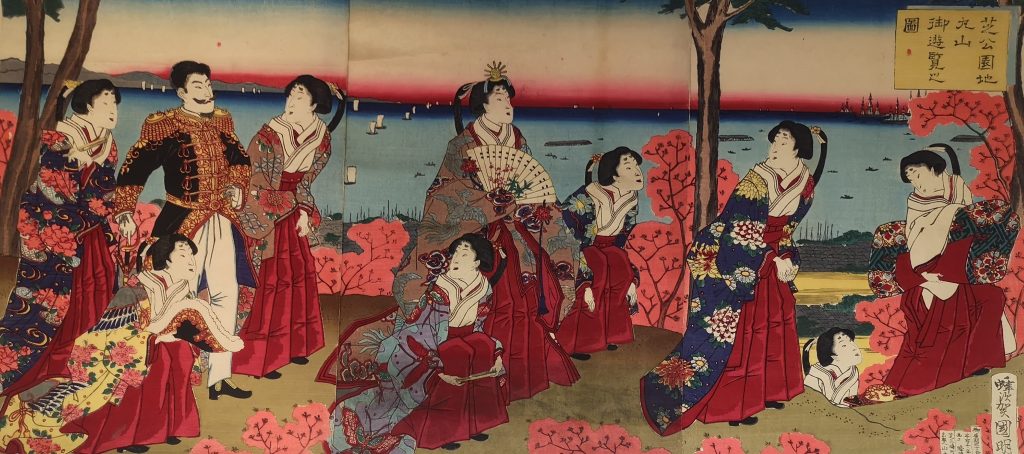
Chronology
1549: St. François-Xavier arrives in Japan.
1614: Tokugawa Ieyasu bans Christianity for the whole of Japan. Many deportations of missionaries and clergymen follow.
1650-1842: sakoku isolationist policy implemented in Japan, aiming at a stricter control of foreign trade.
1831: the pope Gregory XVI assigns the Korea mission to the Missions étrangères de Paris. Japan and the Ryūkyū islands are attached to this mission.
1842: creation of the Japan mission.
1846: Mgr Forcade becomes Japan’s first vicar apostolic.
1856: P. Louis Furet reaches the coasts of Hakodate; it is the first excursion in Japan by an MEP father.
1858: Franco-Japanese treaty, ensuring notably the free exercise of religious worship.
1862: P. Eugène Mermet-Cachon, first catholic missionary to live in post-sukaku Japan, builds the first Catholic church in Japan in Yokohama.
1865: P. Petitjean meets Christians from the Ukarami village, descendants of the sixteenth century Japanese martyrs. This date marks the beginning of the evangelisation of “crypto-Christians” by the missionaries.
1866: P. Petitjean is nominated vicar apostolic of Japan.
1868: end of the shogunate and imperial restauration. Former anti-Christian laws are not repealed.
Imperial rescript forbidding the “detestable Christian sect”.
Out of the 3,750 Catholics in Ukarami, 3,400 are exiled in Kyūshū.
1873: inauguration of the Nagasaki seminary and printing press.
1876: Japan is divided into two apostolic vicariates: Northern Japan, under the direction of Mgr Pierre Osouf, and Southern Japan, with Mgr Petitjean at its head.
1882: ordination of the first three Japanese priests by Mgr Petitjean.
1888: the apostolic vicariate of Southern Japan is divided into two. The apostolic vicariate of Osaka, under the direction of Mgr Félix Midon, and the Nagasaki one, with Mgr Cousin at its head, succeeding to Mgr PetitJean who died in 1884.
1889: The Constitution of the Empire of Japan is promulgated. It recognises religious freedom.
1890: first synod of the Japanese Church.
1891: the Propaganda fide establishes four dioceses replacing the three apostolic vicariates (Tokyo: Mgr Osouf, Hakodate: Mgr Berlioz, Nagasaki: Mgr Cousin; Osaka: Mgr Midon).
1940-1945: the Second World War weakens the MEP position in Japan.
17 MEP fathers disappear from natural or violent death.
Half of Nagasaki’s catholic population disappears under the atomic bomb.
1952: there are 200,000 Catholics in Japan. This number represents a 25 to 30% growth compared with the year before, demonstrating the dynamism of Catholicism in post-war Japan.
1965-1980: the economic growth of the country is combined with a decrease in evangelisation.
Learn more
BEILLEVAIRE Patrick, « Les Missions étrangères de Paris et la résurgence de la question chrétienne dans le Japon du XIXe siècle », in Catherine Marin (dir.), Les écritures de la mission en Extrême-Orient. Le choc de l’arrivée, XVIIIe-XXe siècles : de l’attente à l’arrivée. Anthologie de textes missionnaires, Turnhout : Brepols, 2007, pp. 207-309.
BEILLEVAIRE Patrick, « Présences française à Okinawa : de Forcade (1844-1846) à Haguenauer (1930) », in Ebisu, n°49, printemps-été 2013, pp. 133-164.
(consulté en juin 2021) : http://journals.openedition.org/ebisu/815
BEILLEVAIRE Patrick, Un missionnaire aux îles Ryûkyû et au Japon à la veille de la restauration de Meiji : Louis Furet (1816-1900), Paris : Archives des Missions étrangères de Paris, 1999, 248 p.
BRULEY Yves, « Les missionnaires vus par les diplomates français en Chine et au Japon, à l’époque du Second Empire » in La mission en textes et en images, colloque 2003 du GRIEM, dir. Chantal Paisant, Paris : Karthala, 2004, pp. 435-449
DUNOYER Pierre (MEP), Histoire du catholicisme au Japon : 1543-1945, Paris : Le Cerf, 2011.
MORISHITA Sylvie, La transmission de la tradition catholique chez les crypto-chrétiens japonais, mémoire sous la dir. de Luc Perrin, Strasbourg, 2002.
MORISHITA Sylvie, « Les séparés du Japon au XIXe siècle : le témoignage des Missions étrangères de Paris », in Revue des Sciences religieuses, Strasbourg, 2006, vol 80, n°2, p. 179-192.
NOGUEIRA RAMOS Martin, La foi des ancêtres. Chrétiens cachés et catholiques dans la société villageoise japonaise, Paris : CNRS Éditions, 2019.
NOGUEIRA RAMOS Martin, « Entre la France et le Japon, entre l’enfer et le paradis : les premiers convertis au catholicisme (1865-1875) », in D’un empire, l’autre. Premières rencontres entre la France et le Japon au XIXe siècle, dir. François Lachaud & Martin Nogueira Ramos, Paris : EFEO, 2021, p. 223-256
Sources
BRULEY DES VARANNES Georges (MEP), Le Japon d’aujourd’hui : journal intime d’un missionnaire apostolique au Japon septentrional, Tours : A. Mame, 1892
MARNAS Francisque (MEP), La religion de Jésus (Iaso Ja-kyo) ressuscitée au Japon dans la seconde moitié du XIXe siècle, Paris : Séminaire des Missions étrangères, 1931, 2 vol. (XXXIV-689 p., 592 p.)
LAUNAY Adrien (MEP), Le Japon, Paris : Desclée de Brouwer, 1895, 204 p.
Film
SIMONNET Christian (MEP), Le Japon à l’allure du Shinkansen, 1966
I- (1549-1865) Première diffusion du catholicisme au Japon
(1549-1650) Premières tentatives d’évangélisation par Saint François-Xavier et fermeture totale de l’archipel
Après l’édit de 1614, subsistance de « crypto-villages chrétiens »
(1831-1865) Tentatives de pénétration des MEP au Japon par les îles Ryūkyū
II- (1865-1889) Découverte des descendants de chrétiens et adoption de la Constitution
1865 : Bernard Petitjean et les chrétiens d’Urakami
1837 : Persécutions envers les chrétiens
(1873-1889) Développement de la mission japonaise
III- (1889-1945) Les missions face à la montée du nationalisme japonais et aux guerres mondiales
1889 : Reconnaissance d’une liberté religieuse et création des premiers diocèses du Japon
(1894-1932) La montée de l’absolutisme et du nationalisme japonais
La place de l’Eglise dans l’escalade vers la Seconde guerre mondiale et la passation des pouvoirs dans les mains d’un clergé japonais
IV- (1945-1980) Redéfinition du rôle des missionnaires au Japon
Les séquelles de la guerre
Vers la redéfinition du rôle des MEP au Japon

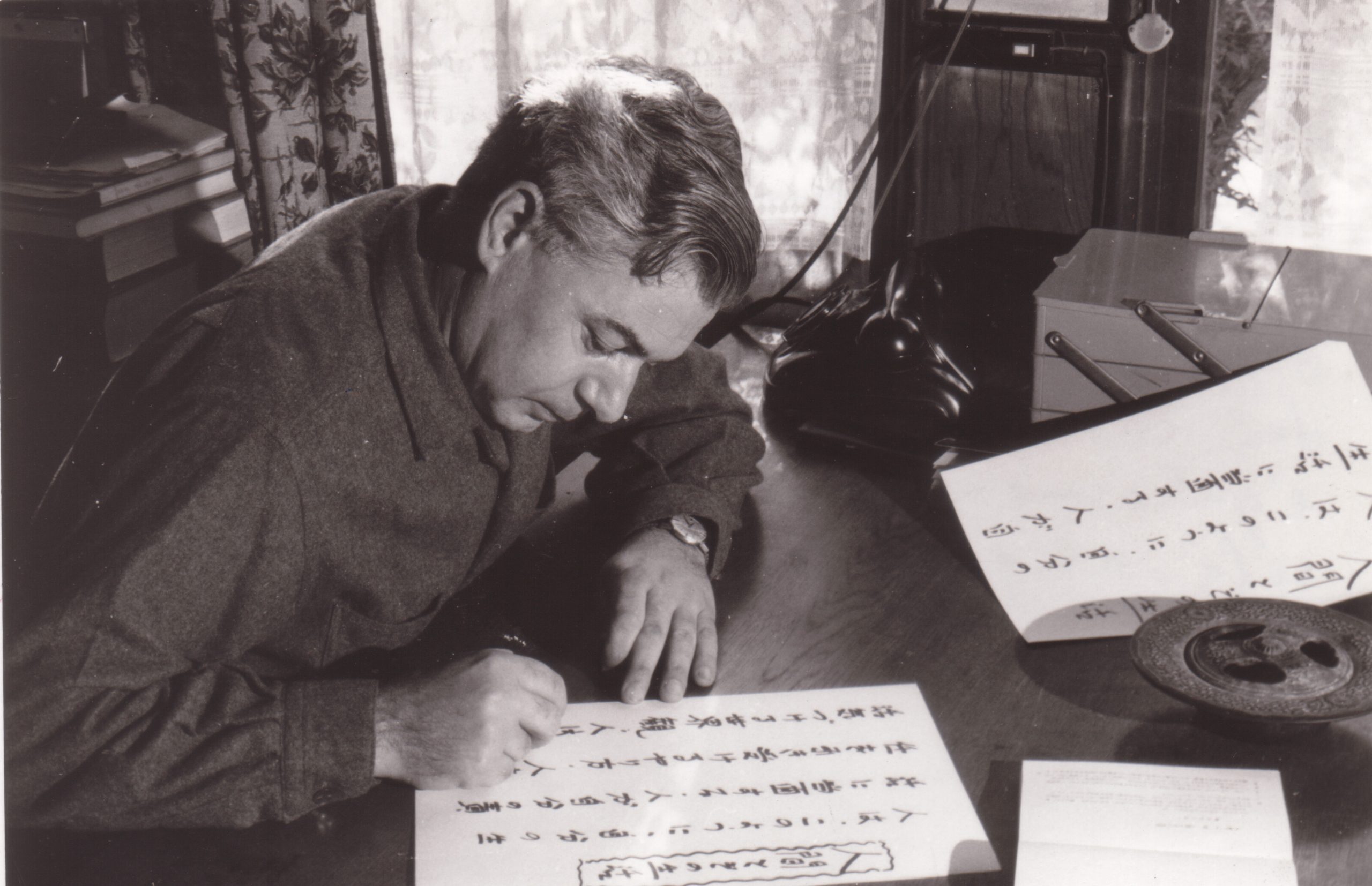
 Download
Download
